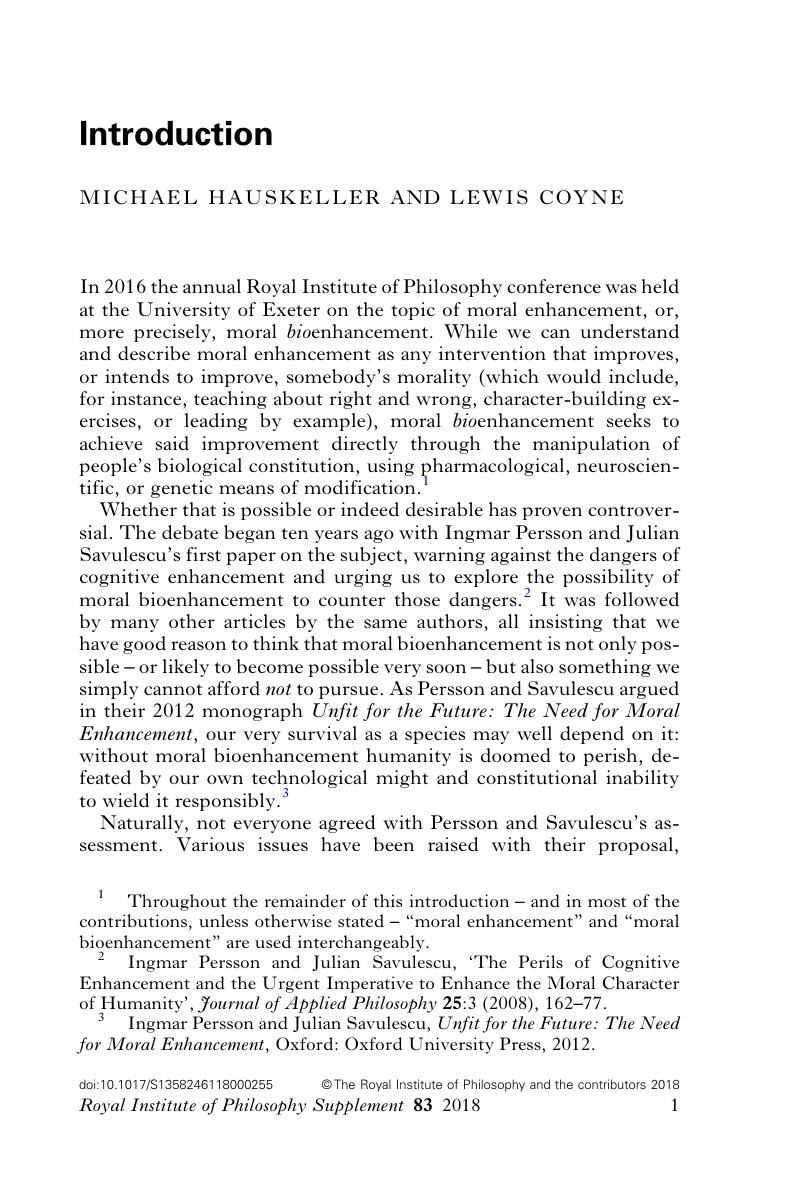No CrossRef data available.
Published online by Cambridge University Press: 16 October 2018

1 Throughout the remainder of this introduction – and in most of the contributions, unless otherwise stated – “moral enhancement” and “moral bioenhancement” are used interchangeably.
2 Persson, Ingmar and Savulescu, Julian, ‘The Perils of Cognitive Enhancement and the Urgent Imperative to Enhance the Moral Character of Humanity’, Journal of Applied Philosophy 25:3 (2008), 162–77CrossRefGoogle Scholar.
3 Persson, Ingmar and Savulescu, Julian, Unfit for the Future: The Need for Moral Enhancement, Oxford: Oxford University Press, 2012CrossRefGoogle Scholar.
4 Cf. Hauskeller, Michael, Better Humans? Understanding the Human Enhancement Project, London: Routledge, 2013Google Scholar.
5 Harris, John, How to Be Good: The Possibility of Moral Enhancement, Oxford: Oxford University Press, 2016, 117CrossRefGoogle Scholar: ‘[a]ll moral philosophers, and indeed all ethicists, must have an interest in moral enhancement’.